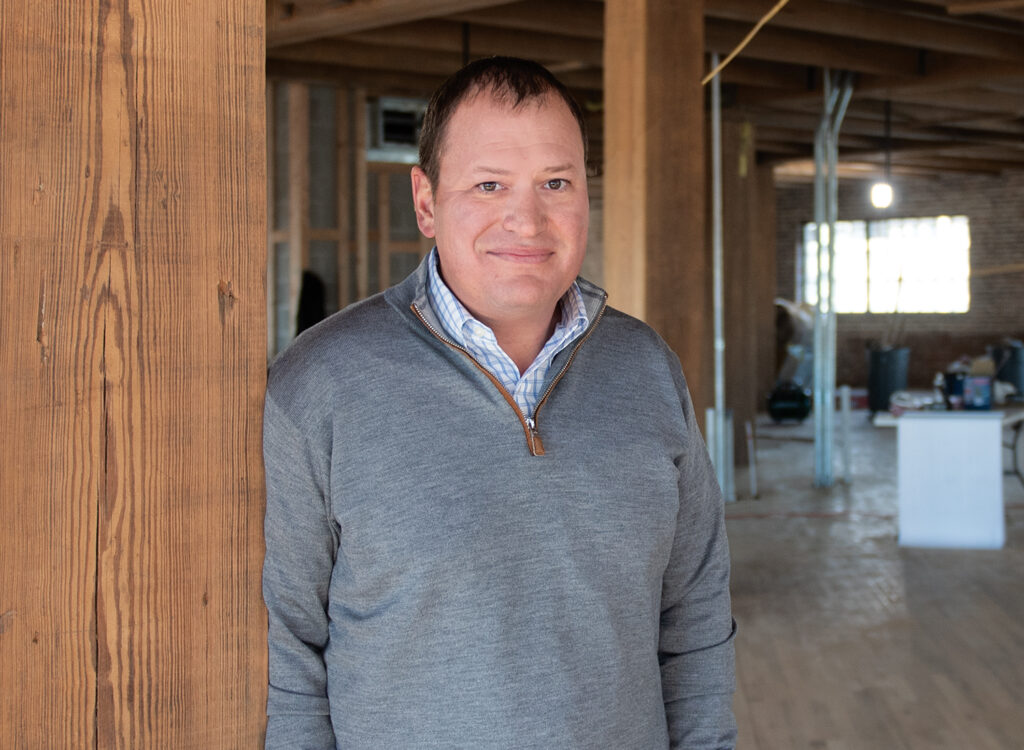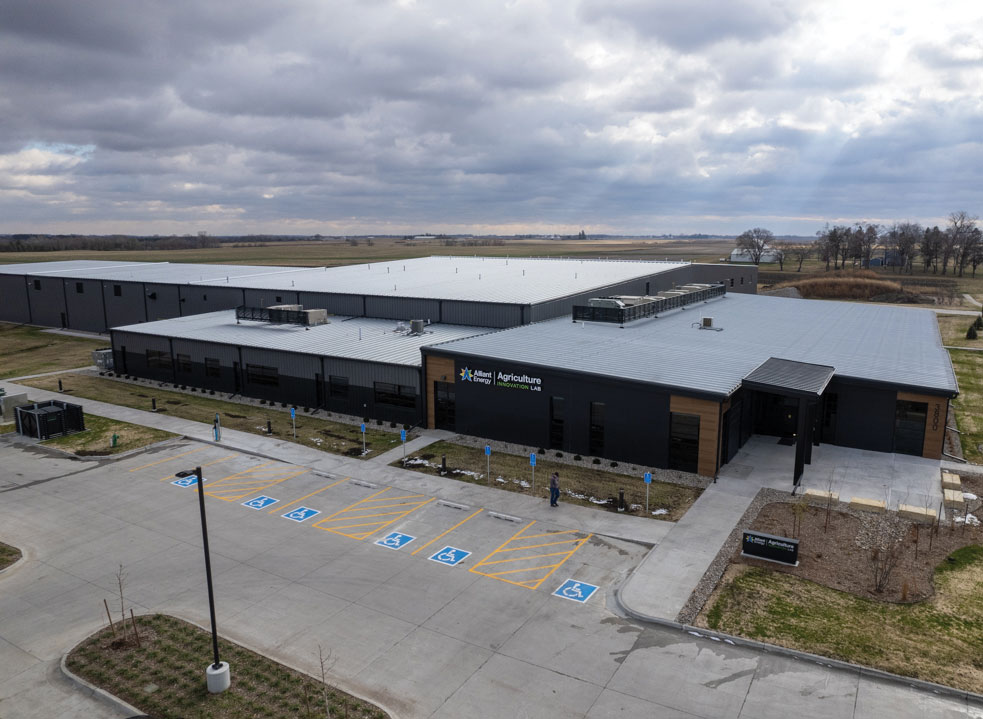Census analysis: Refocus on rural Iowa needed to stabilize population declines

MICHAEL CRUMB Oct 19, 2021 | 3:48 am
10 min read time
2,473 wordsBusiness Record Insider, Economic DevelopmentRural communities, which have been losing population for decades, must do more to stem that loss and stabilize if they are to thrive, the city administrator of one small northern Iowa community said.
The U.S. Census Bureau released its 2020 data in August, and it showed that Iowa’s population grew to just over 3.19 million, up from just under 3.05 million in 2010, an increase of about 4.7%. The data also showed that the migration of residents away from small, rural communities continued with 68 of the state’s 99 counties losing population. Meanwhile, suburban areas, like Des Moines and Polk and Dallas counties continued to grow.
The long-term decline in rural Iowa, known as urbanization, has led to school consolidation and concerns about jobs, housing and the ability of small towns to continue to provide services. It also can have serious implications for the state’s ability to get federal dollars, which are often based on population.
Bancroft, a town of 699 people in northern Iowa’s Kossuth County, succumbed long ago to school consolidation and is no longer home to a school building, but it has worked hard to thrive despite the challenges facing rural communities today.
The town, which sits about 20 miles from the Minnesota border, lost 33 people in the latest census. But Crysti Neumann, the town’s city administrator, believes that trend can be overcome.
Neumann said small towns likely won’t reverse the trend of people flocking to larger communities, but she sees a future where they can stabilize and flourish.
“If we can keep it between 650 people and 700 we’ll continue to thrive,” said Neumann, who also serves as city clerk and administrator of the municipal utility.
She sees several positives in the community. For example, every storefront on Main Street is filled. They have had some new businesses come to town, and they continue to put on festivals that attract vendors and people from across the region.
A Bancroft resident who went to Iowa State University moved back to town after graduation and opened Precision Management Services, an agronomy consulting business. S&B Farms Distillery opened three years ago and has since doubled in size. This summer, the distillery brought in a sanctioned Kansas City barbecue contest that drew 500 people to town.
Bancroft also has two long-standing farm implement dealers and other local shops and businesses.
And it may not seem like much, but Bancroft also has its own police officer, which Neumann said gives residents a sense of security in an already safe community.
Those are all things, Neumann said, that breathe life into a small town and give it hope for its future. But more needs to be done, she said.
Top challenges
Small towns need more housing. They need to do a better job of planning. And they need to do more to pass the torch to the younger generation and be open to new ideas, Neumann said.
“Small towns do not plan,” she said. “We do not look at ourselves the same way a larger community does, and we need to start doing that. We don’t plan well. Rural communities don’t plan for the future. They’re more reactive than proactive.”
That can include looking for places to build homes or locate businesses, Neumann said.
“I hear people say no one is ever going to move here,” she said. “How do you know that? Of course no one is going to move here if you don’t have a place for them to live.”
Neumann said growth in population and industry can happen in tandem, but she believes the first step is bringing talent back to the community.
“You need to get your people back who left when they were in their 20s,” she said. “You need to make it so they can come back as professionals and get paid what they need to get paid.”
At least one couple has moved from the Des Moines metro and now works from home in Bancroft because the city has high-speed internet, although Neumann acknowledges having broadband isn’t a driving force in the community.
What is a top concern? Housing, she said.
A lot of people who work in Bancroft live elsewhere and commute to work each day because of a lack of housing in the community.
For example, many of the employees of Aluma Trailers, which makes trailers for motorcycles, snowmobiles and ATVs, live in other communities, Neumann said.
Conversely, people in Bancroft may travel 16 miles to Algona, the nearest “big city,” a town of just under 5,500, to work. They may travel 32 miles to work at Winnebago in Forest City, or they may drive 37 miles to Fairmont, Minnesota for a job.
Understanding the rural population decline
Dave Peters, an associate professor of sociology at Iowa State University, published a report called Small Towns Project, which analyzes data collected since 1994 to better understand the issues and conditions facing small Midwestern communities today.
He said a chief challenge for rural communities outside the orbit of a larger metro area is a shortage in available workers.
He said that even if a company opens in a small town, it doesn’t necessarily translate into an increase in population for that community.
Peters said the ethanol industry is an example.
“Everyone thought that when you had this big boom in ethanol plants it would create a lot of jobs and that was going to turn around the population,” he said. “It did create jobs, but what ended up happening was people commuted to those jobs … particularly the higher paid ones.”
All too often, workers in rural Iowa don’t live in the town where they work, Peters said.
“Some of these towns have been good at getting employers to expand, the issue is they have the jobs but workers don’t live there,” Peters said. “So here a community spends all this time and effort recruiting a business and they get the property tax revenue, but it’s more than the property tax revenue. Small towns want a vibrant community and part of a vibrant town is having people live there. Having educated people live there. Having people live there who can invest. And what happens is most of the time those people don’t live in those towns when there’s a larger community nearby with more amenities. So it’s a challenge.”
Because quality-of-life expectations are different between rural communities and larger, metropolitan areas, it’s difficult for those small towns to attract people to live there, Peters said.
“All those amenities of larger communities just aren’t present and it’s hard for small communities to replicate that,” he said. “The easiest thing for a business to do is open in a metro area. You have access to labor. You have all the amenities. The workers want to live there, so you have these growing metro areas where most of the economic activity is concentrated.”
The cost of rural decline
Peters said if rural areas continue to decline it could create a situation where there are two Iowa’s: One with a few metro areas with jobs and economic clout and one where only people who farm live. And it doesn’t take that many people to farm anymore, he said.
“You basically have what we see in developing countries where you have a few very wealthy cities and then increasingly poor, depopulated, under-invested areas,” he said. “We’ve never had that in this country, but you look at areas in the Great Plains … you have these places where you have too few people where they can’t invest in schools. They can’t invest in infrastructure and they can’t maintain their facilities and buildings.”
For that to change, decision makers at the state and federal level need to focus efforts to help small rural communities better meet their needs. And that can vary from town to town, Peters said.
For some it’s housing. For some it’s quality day care. For some it may be broadband.
“It’s sort of these one-sized fits all programs and funding streams,” Peters said. “For example there’s a lot of money for housing and broadband, but in some towns that’s really not what’s needed.”
Those towns may instead prefer seed money to help get a different kind of project started, he said.
“There needs to be more flexibility with state funds to fund things that are priorities for communities, not what state-level people decide,” Peters said.
Another factor for the rural population decline is the loss of manufacturing that has been moved overseas.
“It’s finding what rural America’s niche is in the 21st Century,” Peters said. “In the 20th Century, rural America used to be the low-cost way to do manufacturing. Now that’s China and east Asia, Vietnam and other places.”
With that gone, rural communities haven’t found their place in the U.S. economy, he said.
Politics and policy of population decline
Joe Murphy, executive director of the Iowa Business Council, said the latest census data only confirms what has been known for the past several years.
“We’ve been in the midst of a workforce shortage for quite some time, and more recently it’s the most acute workforce shortage we’ve ever experienced in our state,” he said. “We grew at less than 5% over 10 years. That’s about 14,000 individuals per year, which is really not great. That’s population stagnation at best.”
More needs to be done to grow the state’s population, retain graduates from the state’s universities and community colleges, and attract new people to Iowa, Murphy said.
He said while the growth that has occurred in Iowa needs to be recognized, it’s important to acknowledge that the population has been shrinking in two-thirds of the state.
“Two thirds of our counties in Iowa reached their peak population by 1950 or earlier, so we have to look at this holistically,” Murphy said. “I don’t think it helps much to pat ourselves on the back for small areas of growth. [The Business Council] has companies in all counties in the state, whether that’s through retail, health care or other aspects, and we need to provide Iowans those opportunities to work for those companies, or they will look for elsewhere outside of the state to continue to grow their businesses.”
Iowa, Murphy said, is quickly becoming a location where there aren’t enough people for companies to expand.
“And that’s not a good place to be in,” he said. “That’s why we’re concerned and why we need to be looking creatively into different solutions to grow the population and retain our current population.”
That will be difficult if rural areas of Iowa continue to shrink, Murphy said.
“That’s why we need to be really focused on those rural parts of the state,” he said. “That’s the direction I think the focus of the state should go in, trying to focus on economic growth in all four corners of the state.”
Workforce and affordable housing, grants for moving expenses, paying off student debt, and tax policy changes all should be considered to attract people to Iowa, Murphy said.
Immigration reform, including the resettlement of refugees, and industrial modernization, also need to be on the table, he said.
“We should be doing everything we can to explore those possibilities to see what might be helpful in growing our state and promoting economic growth, particularly in rural parts of Iowa,” Murphy said.
Murphy said the state’s slow growth and decline in rural areas also can have other ramifications.
Although Iowa won’t lose a congressional seat because of the latest census numbers, the continued stagnation in the state’s population could affect its abilities to get federal funds, Murphy said.
“It has impacts on not only the influence you have from a delegation standpoint, but it also has a direct impact on the amount of money coming into our state through federal grants, research or other things, because so many national agencies and departments allocate money based on population,” he said. “So if we’re not growing as fast as the rest of the country, at a minimum, we’re losing money, and that’s not a position any state wants to be in.”
The future of small town America
The population decline seen in Iowa is not unique to the state, said Liesl Eathington, a research scientist and economist at Iowa State University.
It’s a long standing trend nationwide, with more than half of the counties in the country losing population, she said.
Eathington, who published an interactive tool that looks at population growth in Iowa’s cities and counties, said the idea that rural communities will someday dry up is extreme. Although they may continue to shrink, they will continue to play a role in the larger economy, she said.
“There will still continue to be a need for certain types of activity in those areas,” she said. “We’re in a constant process of finding the level of population required to support those activities. Some will continue to shrink. Some will stabilize.”
Peters said while most small towns are declining in population, they aren’t withering away.
“They’re losing population, but poverty hasn’t gone up, so they’re still fairly prosperous,” he said. “Community support systems are still functioning, they have active community organizations, so while they’re losing population, things aren’t really at a crisis point, yet.”
That could change when the Baby Boomer generation, many of whom are in those leadership roles in those communities, step down, Peters said.
“When those people leave or retire, I don’t see hardly anyone being groomed and I don’t see a lot of people on those committees and organizations that are going to take over those reins,” he said. “That’s why I say in 10 to 15 years, there’s going to be major shifts. There aren’t a lot of younger people there who are going to maintain those community foundations, the Lions Clubs and other community groups that really work to keep the quality of life in these towns.”
Small towns supporting one another
Neumann, the Bancroft city administrator, said small towns working together and supporting each other will be key to the future success of rural Iowa.
“I think the future is there for rural towns,” she said. “One of the things I would like to see is rural communities … looking at it more regionally. What’s good for Bancroft, that’s good for Algona, it’s good for Swea City, and it’s good for Lakota. If something good happens in Lakota that’s good for all of us, too.”
That approach, which is widely touted as a major factor in the success of the Greater Des Moines region, needs to spread to rural areas of Iowa, Neumann said.
“If something great is happening in Ledyard, let’s go support it, let’s cheer them on,” she said. “And then maybe they’ll come to Bancroft and see something and maybe begin shopping here, and then we can grow together.”








